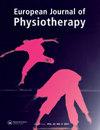Making sense of invisible bodily changes and new ways of doing physical activity experiences of individuals following traumatic incomplete spinal cord injury
IF 1.1
Q3 REHABILITATION
引用次数: 0
Abstract
Abstract Background There is limited knowledge of how individuals with incomplete spinal cord injuries (iSCI) experience being physically active, and how they experience their bodies within movement contexts of their everyday lives. Methods Seven ambulatory individuals with a traumatic, cervical to lumbar iSCI took part in an in-depth, semi-structured interview. The interviews were audio recorded, transcribed verbatim, and analysed using an inductive approach of Braun and Clarks’ thematic analysis. Merleau-Ponty’s phenomenology of the lived body and Leder’s phenomenology of the surface and inner body were used as theoretical framework in the study. Results Two themes identified: ‘Struggles of life in-between’ and ‘Unpredictability of the inner body’ encompass an ongoing discrepancy between the visible body and invisible ailments. Participants experienced pain when working out, but physical activity was also a way to regain control and was related to hope of improvement. Clinical implications Our results indicate that focusing on helping patients exploring meaningful activities and paying less attention on the intensity of exercises can be of great value. A phenomenological perspective of the body may be helpful as a clinical framework helping patients living more meaningful lives with less emphasis on pain and the problematic aspects of their bodies.理解创伤性不完全性脊髓损伤后个体的无形身体变化和身体活动体验的新方式
本文章由计算机程序翻译,如有差异,请以英文原文为准。
求助全文
约1分钟内获得全文
求助全文

 求助内容:
求助内容: 应助结果提醒方式:
应助结果提醒方式:


